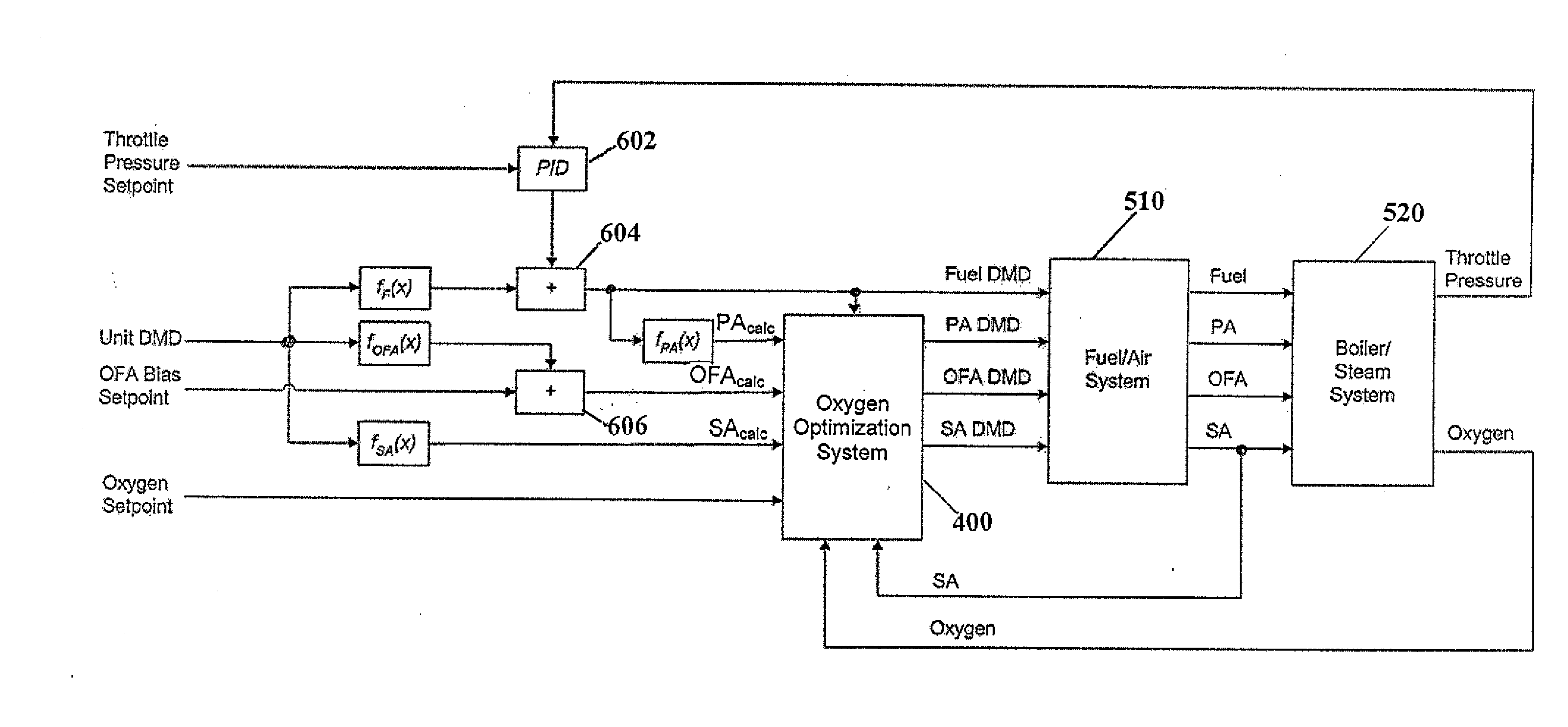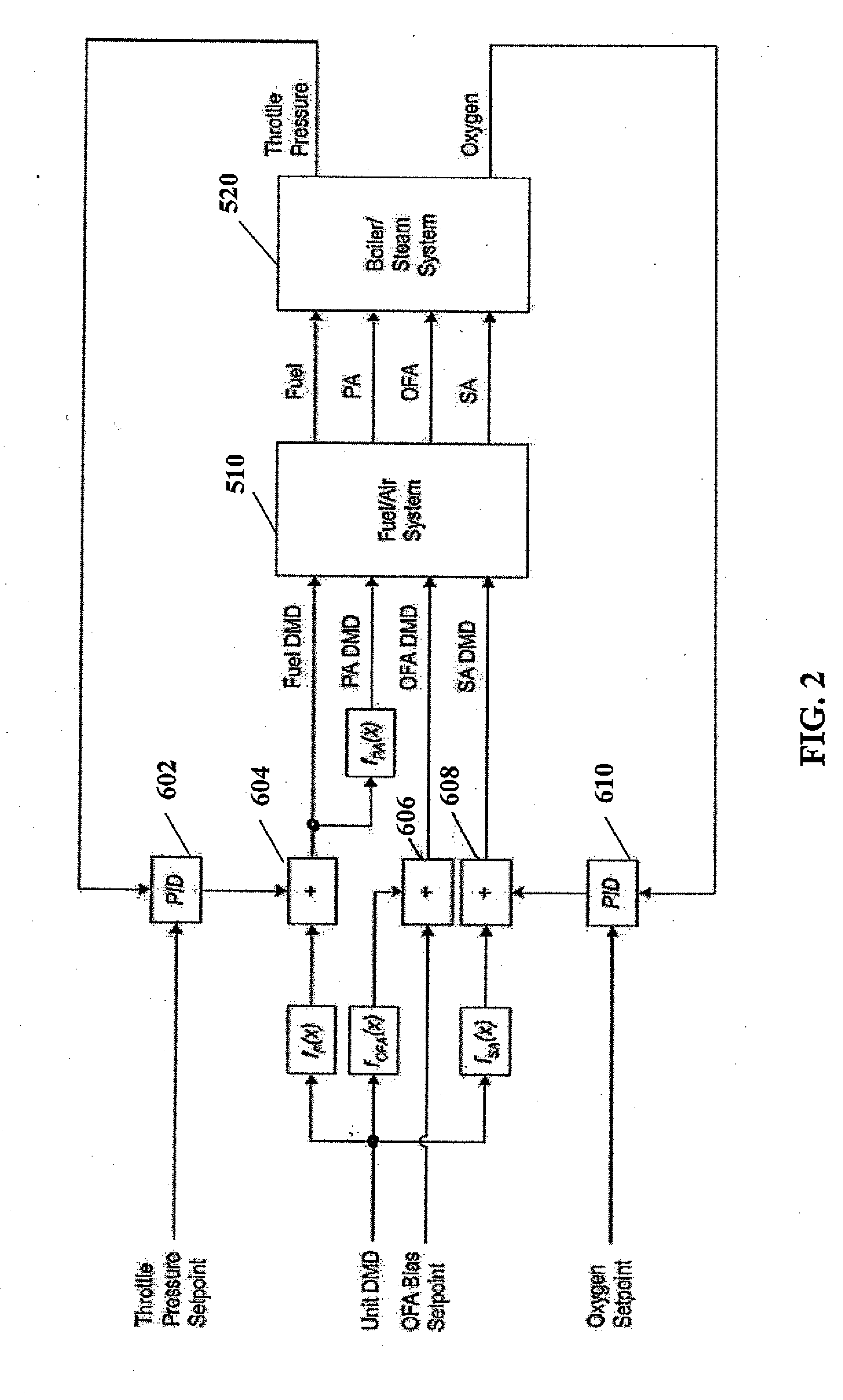System for optimizing oxygen in a boiler
- Summary
- Abstract
- Description
- Claims
- Application Information
AI Technical Summary
Benefits of technology
Problems solved by technology
Method used
Image
Examples
Embodiment Construction
[0038] It should be understood that the various systems described in the illustrated embodiments of the present invention may take the form of computer hardware, computer software, or combinations thereof. The computer hardware may take the form of a conventional computer system including a processor, data storage devices, input devices (e.g., keyboard, mouse, touch screen and the like), and output devices (e.g., display devices such as monitors and printers), or be embodied as part of another computer system.
[0039] Furthermore, the specific inputs and outputs of each model disclosed herein are shown solely for the purpose of illustrating an embodiment of the present invention. In this regard, it is contemplated that the specific model inputs and outputs may vary according to the requirements of the model and the desired predicted values that are being determined by the model.
[0040] The present invention is described herein with reference to power generating units for the generati...
PUM
 Login to View More
Login to View More Abstract
Description
Claims
Application Information
 Login to View More
Login to View More - R&D
- Intellectual Property
- Life Sciences
- Materials
- Tech Scout
- Unparalleled Data Quality
- Higher Quality Content
- 60% Fewer Hallucinations
Browse by: Latest US Patents, China's latest patents, Technical Efficacy Thesaurus, Application Domain, Technology Topic, Popular Technical Reports.
© 2025 PatSnap. All rights reserved.Legal|Privacy policy|Modern Slavery Act Transparency Statement|Sitemap|About US| Contact US: help@patsnap.com



